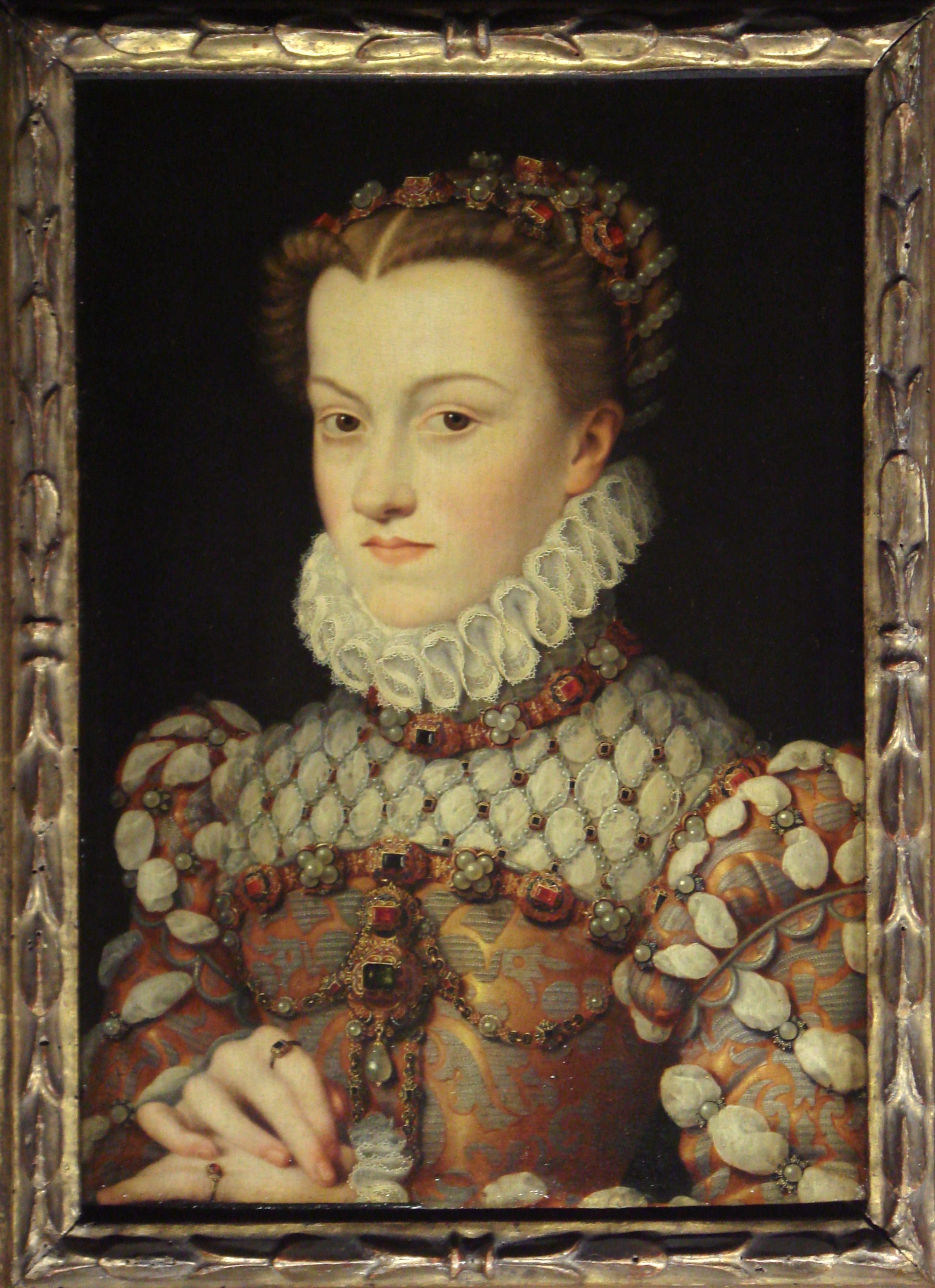Richard and Joan greet Philip II of France
Married away to a foreign king at the age of only eleven, Princess Joan of England had to adjust to a whole new lifestyle. When she was widowed at the age of twenty-four she became an important bargain piece of her brother, Richard the Lionheart, in marriage, but not before undertaking several journeys, including one to the Holy Land where she and her sister-in-law-to-be were held captive by the ruler of Cyprus...
Joan was born sometime in October in 1165 as the seventh child and third surviving daughter to Henry II of England and his wife, Eleanor of Aquitaine. She was born in Anjou in France, and spent her childhood in the courts of her mother at Winchester and Poitiers. She grew up to be quite beautiful with blonde/reddish hair and nice features. She was intelligent and was taught English, Norman French and also some Latin in addition to a range of skills deemed appropriate for a woman of her rank.
In 1176 a delegation from Sicily came to the English court, asking for Joan’s hand in marriage on behalf of William II of Sicily. Joan’s parents agreed to the proposal, and the betrothal was confirmed. On the 27th of August, Joan, together with a large group of people consisting of ladies-in-waiting, knights, clergy and various retainers, laid out to sail for Sicily. The trip began with the short stretch from Winchester to Southampton, escorted by the archbishops of Canterbury and Rouen, the bishop of Evreux and her father’s brother Hamelane. Then Prince Henry, her oldest brother, accompanied her across the Channel and into France to Poitiers. There she was met by another brother, Richard, who escorted her through the Duchy of Aquitaine, across the allied County of Toulouse to Saint Gilles Port, where Bishop Richard Palmer welcomed her in the name of the King of Sicily.
Twenty-five Sicilian ships awaited the young princess to sail her to her husband-to-be. The last part of the journey left Joan seasick, but she finally arrived at the end of January and married William at Palermo Cathedral on the 13th of February 1177 at the tender age of eleven while her husband was twenty-three! She was crowned, and was now queen consort.
The Sicilian court was very different than the English – there were harems, and clothing and food were more exotic than what the young princess ever had witnessed before. It is reported that Joan bore a son in 1181, Bohemond, who probably died in infancy. It is also possible that she suffered miscarriages given her tender age, so when William died in 1189, they had no surviving heir and issue. The new king, Tancred, kept Joan as prisoner, but following her father’s death the same year as her husband’s, her brother Richard was now king. He demanded her return along with her dowry. When Tancred refused his commands, Richard seized a monastery and the castle of La Bagnara. He decided to spend the winter in Italy and attacked and subdued the city of Messina. Finally, Tancred agreed to the terms and sent Joan's dowry. In March 1191 Eleanor of Aquitaine arrived in Messina with Richard's bride, Berengaria of Navarre. She was left in the care of Joan, and Richard decided to postpone their wedding as he was on a crusade. He put his betrothed and sister on a ship to follow him to the Holy Land, but the ship carrying Berengaria and Joan went aground off the coast of Cyprus, and they were threatened by the island's ruler, Isaac Comnenus. Richard came to their rescue, captured the island, overthrew Comnenus, and married Berengaria in the Chapel of St. George at Limassol.
Even though Joan was Richard’s favourite sister he still tried to marry her to the Muslim Al-Adil who was the younger brother of Saladin, the ruler of Egypt and Syria. Joan was very against such a marriage as she was a faithful Catholic and could not stand the thought of being married to a Muslim. King Philip II of France also expressed some interest in marrying her, but this scheme also failed. Joan finally married Raymond VI of Toulouse in October 1196. Together they had three children; Raymond VII born in 1197, Wilhelmina born in 1198 and Richard in 1199, but he died shortly after birth.
Joan came to fear her new husband as he was now known to be very kind towards her. In 1199, while pregnant with a third child, Joan was left alone to face a rebellion in which the lords of Saint-Félix-de-Caraman were prominent. She laid siege to their castle at les Cassès, but soon travelled northwards, hoping for her brother's protection. Instead she found him dead at Château de Chalus-Chabrol. She then fled to her mother’s court at Rouen, where she was offered refuge and care.
Joan was a very religious woman, and asked to be admitted to Fontevrault Abbey, which was an unusual request for a not only married, but pregnant woman, though her request was granted. She died in childbirth at the age of thirty-tree and was veiled a nun on her deathbed. Her little son died shortly after being baptised.
I haven’t read any books on her life, though they exist. The newest, The Queen’s Daughter by Susan Coventry, is on my TBR list.

